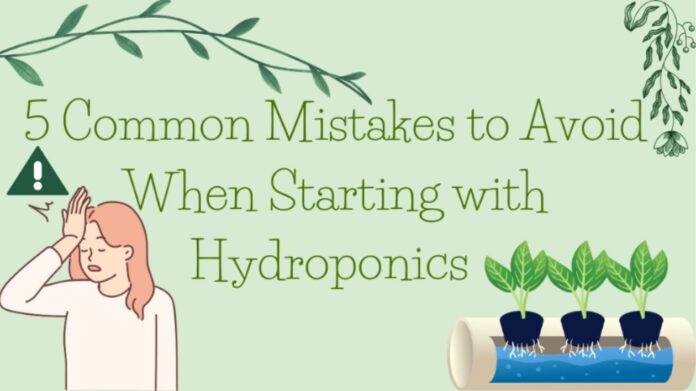Hydroponics can feel like a gateway to the future of gardening. The idea of growing fresh produce indoors, without soil, year-round is incredibly appealing. It’s a rewarding hobby that combines a bit of science with the simple joy of watching something grow. However, this soil-free method has its own set of rules, and many enthusiastic beginners stumble over the same few hurdles.
Ready to set yourself up for success? Let’s walk through the most common mistakes and how you can easily sidestep them.
1. Ignoring Water Chemistry (pH and EC)
It’s easy to assume that water is just water. But in hydroponics, the water is everything, it’s the delivery system for all the nutrients your plants need. The two most critical measurements of this water are its pH and EC levels, and ignoring them is a recipe for disappointment.
Think of pH as a gatekeeper. If the pH level is too high or too low, it effectively locks the “gate,” preventing your plant’s roots from absorbing the nutrients you’re providing, even if they are plentiful in the water. EC, or electrical conductivity, measures the total amount of dissolved nutrients in your solution. Too low, and your plants starve; too high, and you can cause “nutrient burn,” damaging the roots.
2. Using the Wrong Type or Amount of Nutrients
With your water chemistry in check, the next focus is what you’re actually putting into it. Many newcomers make the mistake of grabbing a generic, all-purpose plant food from a garden center, assuming it will work just fine. Unfortunately, soil-based fertilizers and hydroponic nutrients are not interchangeable.
Fertilizers designed for soil rely on microorganisms to break down compounds and make them available to plants. Hydroponic systems don’t have this soil ecosystem. Therefore, hydroponic nutrients contain everything a plant needs in a readily available form. In fact, poor nutrient management is a primary reason for failure, as getting the right nutrient mix is crucial for plant health, with some estimates suggesting lots of the new systems suffer from easily avoidable deficiencies. Over- or under-dosing is another common pitfall, leading to either burned roots or stunted growth.
3. Providing Inadequate Lighting
That sunny spot on your windowsill might be great for a houseplant, but it’s rarely enough for hungry, fast-growing hydroponic crops like lettuce or tomatoes. Light is the fuel for photosynthesis, and without enough of it, your plants will become “leggy” (tall and spindly) and weak, and they won’t produce a worthwhile harvest.
The intensity, spectrum, and duration of light all play a huge role. Plants require different types of light at different growth stages, and the amount of light they receive directly correlates with their growth rate and overall health.
4. Overlooking Root Zone Oxygen
In soil, roots find tiny air pockets to breathe. In a hydroponic system, we have to provide that oxygen deliberately. When roots sit in stagnant, un-aerated water, they can’t perform their functions and become susceptible to devastating diseases like root rot. You’ll often notice the roots turning brown and slimy, and the plant will quickly wilt and die.
This is especially a risk in popular beginner setups like the Deep Water Culture (DWC) method, where roots are submerged in a reservoir of nutrient solution 24/7. Without active aeration, the dissolved oxygen gets used up quickly.
5. Starting Too Big or Too Complicated
The excitement of starting a new hobby can sometimes lead to overambition. It’s tempting to want to build a massive, multi-plant system to grow everything from strawberries to bell peppers right from day one. However, this approach often leads to overwhelm.
Managing a large system with different types of plants, each with unique nutrient and light requirements, is a challenge even for experienced growers. When something goes wrong, and in the beginning, it will, troubleshooting a complex setup is a nightmare.
Frequently Asked Questions
What is the easiest plant to grow for a hydroponics beginner?
Leafy greens like lettuce and herbs such as basil and mint are by far the easiest.
How often should I change the water in my hydroponic reservoir?
A good rule of thumb is to completely empty and refill your reservoir with a fresh nutrient solution every one to two weeks.
Is hydroponics an expensive hobby to get into?
It can be, but it doesn’t have to be. While professional-grade systems can cost hundreds or thousands of pounds, a simple DIY bucket system can be built for very little.
Can you grow organic produce with hydroponics?
This is a topic of much debate. While it is possible to use organic-certified hydroponic nutrients, they can be more difficult to manage as they may clog systems and require more careful monitoring.






